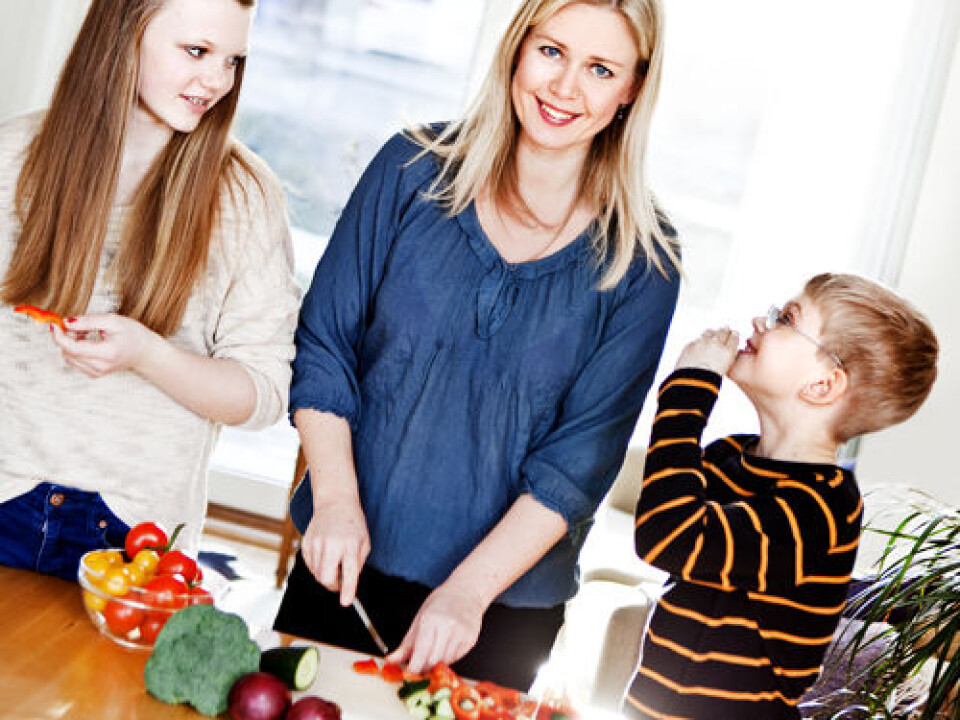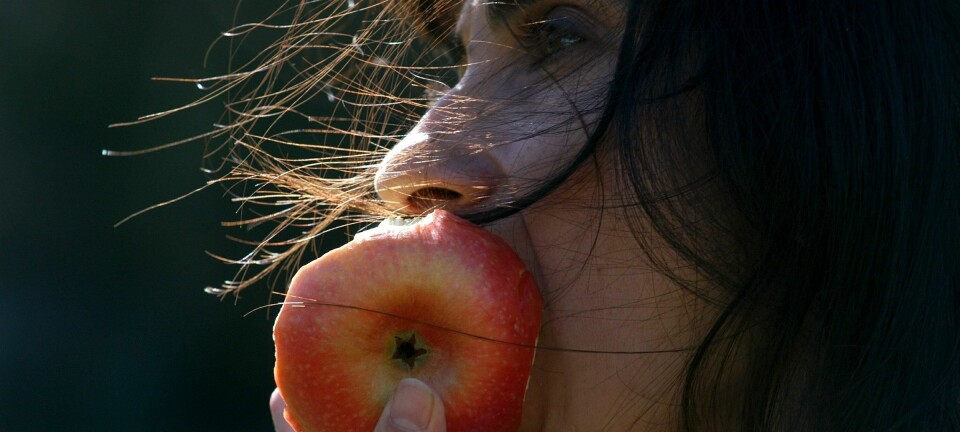This article was produced and financed by University of Stavanger

Carrot but no stick for a healthy child
Obesity among children has long been a rising problem in large parts of the world. Strict rules can make them less healthy.
Denne artikkelen er over ti år gammel og kan inneholde utdatert informasjon.
Providing youngsters with fruit and vegetables, involving them in buying and cooking healthy food, and encouraging them to eat it are key elements for creating healthy eating habits.
Nutritionist Elisabeth Lind Melbye from the University of Stavanger, warns however against strict rules on what children can or cannot eat. That can actually make them less healthy.
Steady increase in obesity
Accordingly to health statistics, the number of young children who are overweight or obese has been rising steadily over the past 30 years.
The proportion of overweight children in the USA, the UK and southern Europe is almost twice as high as in northern Europe. Nevertheless, roughly one in five Norwegian eight-year-olds is overweight or obese.

Daily consumption of fruit and vegetables by children in Norway is far below the recommended level. Melbye views these developments with concern. She now wants to mobilise parents in the fight against obesity, and her PhD thesis has focused on the vital part they play in encouraging a positive diet.
Some 800 Norwegian children aged 10-12 and their parents took part in this study. Melbye has focused on older children compared to studies conducted in US and France, where they have studied children from two to eight years old.
Myths about eating healthy
Her study tackles some of the myths about good strategies for encouraging healthy eating by children, and she has come up with a number of recommendations to parents.
“The most important thing parents can do is to have healthy food on hand for their child, who should be allowed to eat this whenever he or she wants.”

Melbye maintains that how food has been organised in the home has long been undervalued.
Parents must ensure that unhealthy food is not available except at parties. In with the fruit bowl, out with the sweet packet, she emphasises.
“In addition to exposing children to healthy food, they ought also to participate in its preparation and in planning meals. Let them cut up vegetables and help in the kitchen” says Melbye. She also encourages parents to bring their children to the shops.
“If they’re old enough, you can also discuss healthy eating with them and explain why it’s good for the body”.
Forbidden fruit tastes best
Inculcating a good relationship with food from an early age is an important lesson Melbye wants to convey. But parents must not be too strict. While earlier international studies have devoted most attention to parental control of child eating, she has also looked at the way youngsters make their own choices.
Her studies show that If parents are unreasonably strict and restrictive over diet, their offspring might develop a yearning for unhealthy food. They then eat less of the healthy options.
“That’s the paradox – forbidden fruit is tempting. So even when parents encourage a good diet, the child itself must also feel that it has both the opportunity and desire to eat properly," says Melbye.
She is convinced that the goal must be to create a sound home environment, where a healthy and varied diet and good experiences with food are the main ingredients.
------------------------------
Read this story in Norwegian at forskning.no
Scientific links
- Elisabeth L. Melbye et al: Validation of the Comprehensive Feeding Practices Questionnaire with parents of 10-to-12-year-olds. BMC Medical Research Methodology 2011, 11:113, 2011. Abstract
- Elisabeth L. Melbye et al: Child consumption of fruit and vegetables: the roles of child cognitions and parental feeding practices. Public Health Nutrition, FirstView Article : pp 1-9 (abstract)


































